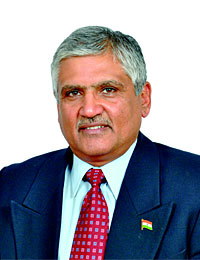Publisher’s Note
 In recent years, new approaches and techniques have been advanced to improve the detection of incipient and developing faults in bearings and gear units using wear debris analysis. As opposed to the application of any singular new or emerging technology, these new methods are more systematic and functional. It begins with improvements in the sampling process to enrich the data and proceeds through the use of specific strategies and tactics. After detection is confirmed, the final analytical phase involves wear particle identification using both classic and advanced techniques.
In recent years, new approaches and techniques have been advanced to improve the detection of incipient and developing faults in bearings and gear units using wear debris analysis. As opposed to the application of any singular new or emerging technology, these new methods are more systematic and functional. It begins with improvements in the sampling process to enrich the data and proceeds through the use of specific strategies and tactics. After detection is confirmed, the final analytical phase involves wear particle identification using both classic and advanced techniques.
Qualitative analyses of the particle morphology, is seen as an important factor in deciding what action to take once a problem has been identified, because it assists in identifying the source, severity and mechanism of wear. As important as the physical testing of the sample is the method of communicating results to management.
The benefits of obtaining better intelligence on the health of equipment from correct testing, interpretation and data processing provide management with important information for strategic machine maintenance.
The common goal when it comes to wear debris analysis is to achieve the highest level of machine reliability at the lowest possible cost. However, to reach this goal, several subsidiary objectives must be systematically targeted and achieved. These objectives will be referred to as strategies and, in sum, define the pathway for applying wear debris analysis in attaining machine reliability. It is common to be introduced to wear metal data that fails to exhibit consistent or explainable trends. The data may appear to be fragile, moving erratically without any apparent reason. There are other times when additional predictive maintenance (PdM) technologies confirm a problem, yet no measurable indication from wear metal analysis appears.
Much of these results are caused by poor data quality associated with either the sampling process or the analyses. In other cases, the data is too weak or is lost in the noise range. Most of these problems can be overcome by employing modern techniques and tactics.
Regardless of the technology deployed, it is difficult to obtain good estimates of the residual life of operating machinery. Such information is considered valuable in defining the corrective measures and urgency. When combined with all available conditional information, wear debris analysis can assist in estimating how far wear has progressed and the minimal response time needed.
There are many excellent case studies that have validated the successful application of wear debris analysis in industrial machinery. For the organizations, the benefits and savings emanating from increased machine reliability is real. Success in effectively implementing such programs using wear particle analysis depends on many assorted goals, strategies and tactics. Together, they form an important plan that may depend more on technique and less on technology.
For well-engineered programs, wear particle analysis may be the most penetrating and early warning system of all maintenance technologies in use.
We would like to thank our readers for the encouraging response to our previous edition’s cover story – “100 ways to improve your lubrication program” and other articles. Our current issue is on “How to prevent equipment failures with wear debris analysis” which will help our readers to find whether inadequate lubrication or poor maintenance practices are to blame for your equipment problems. We welcome our readers to participate by sending their feedback & contributing articles and case studies. Best wishes for Navratri & Diwali.
Warm regards,
Udey Dhir
